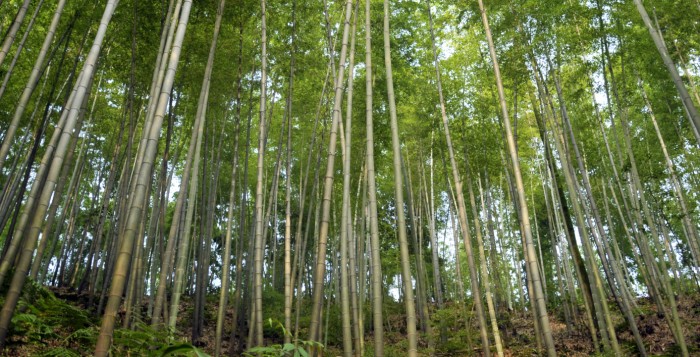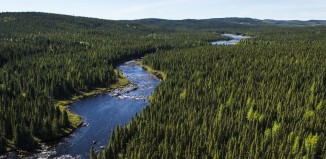Non-Wood Fiber paper vs. Wood Fiber: Which is Better?
The environmental impacts of making paper from ‘tree-free’ fiber sources can be similar and even higher than using wood pulp. Here’s why.
There’s a popular notion that paper made from non-forest sources like hemp, bamboo or kenaf offers a more sustainable alternative to paper made from wood pulp. In other words, if you choose tree-free paper you’re protecting the environment. But that’s an oversimplification of a fairly complex equation.
Most studies comparing the environmental impacts of paper made from wood and non-wood raw materials have found that the impacts are broadly similar, and in some cases even higher for crop based fibers, depending on what you consider. Simply put, relying on crops to produce paper and pulp is not a panacea, and avoiding the use of wood is not necessarily the best way to protect forests.
By working with a crop instead of a forest, we are replacing one raw material for another. Even the use of polypropylene or polyester to make ‘plastic’ paper must account for its raw material, i.e. petroleum, which carries important environmental costs – many of which are significantly higher than wood-derived paper.
It’s important to consider all aspects of working with a raw material – from how much water it takes to grow and make into paper, to how much energy goes into creating it, and what other useful products it can produce.
Fiber crops like bamboo, kenaf and hemp are used around the world, but the overall impact can be problematic if one is arguing that these are better than using wood fiber. This bears out even as we examine just a few factors. Here are four:
- Fiber crops need more water. Forests are cultivated over several years and are more resistant to variations in rainfall. Crops, however, can require a lot of water. Kenaf, for example, needs five inches of water a month. As for processing, a non-wood crop’s shorter fiber requires more water for processing. Since most of the water used in processing – whether for wood-fiber or non-wood fiber – is treated and returned to the environment, it’s not so much a matter of consumption as it is about water sensitivity. As such, non-wood fiber processing is not a good option in low water areas.
- Fiber crops use more energy to grow. Non-wood fiber crops are often cited as offering a better yield than their wood counterparts when comparing the energy used to process. And depending on circumstances, this can be the case. But crops require more inputs. The harvesting and cultivation of a crop is more intense than that of a forest because it happens more frequently. There is also a greater reliance on fertilizer, which is energy-intensive. In fact, one measure finds that up to 50% of the energy consumed for agricultural production is associated with the manufacture and distribution of fertilizers.
- Wood offers energy for the process and creates other products. Non-wood fibers have the advantage in mechanical pulping where they require less energy than wood fibers, but in chemical pulping, working with forest products has a number of strengths. Specifically, it has a lower reliance on fossil fuel generated electricity than non-wood fiber pulping. In fact, energy derived from wood’s liquor recovery typically produces about 50% of a North American pulp and paper mill’s energy needs. And pulping wood this way also yields other products such as tall oil and turpentine.
- Forests are a better use of land. Even a heavily managed tree plantation offers better habitat value, biodiversity, water quality protection and soil carbon storage than an agricultural crop. That’s because all of the harvesting, replanting, fertilization and even pesticide application is being done only once every several years. But in agriculture, this happens annually. Studies have shown that proximity to native forests is the biggest determinant of species richness (one measure of biodiversity represented by the number of plant and animal species in a given area), which means that managed forests have a big biodiversity advantage over agricultural areas .
- Annual crops can only be harvested once a year. A constant, year-round supply of fiber is a primary concern for paper mills, which is difficult to guarantee with non-wood fiber crops that are generally harvested just once a year. Developing storage capacity requires additional land, energy and resources, which would be significant considering that most non-wood fiber sources are high in volume and low in density when compared with wood.
Finally, there is a great irony to the use of crops in an effort to thwart deforestation. To save a tree, one might think it is best to derive paper from a crop. But tree harvesting in the U.S. is not depleting its forests. Rather, net tree growth has exceeded removal for over six consecutive decades. For the U.S., the greatest danger to forests remains land conversion , while in Canada agriculture urban development, transportation, recreation and hydroelectricity are the main deforestation drivers . In other words, if the demand for tree-free paper were to increase, forests may need to be cut down to convert timberland into farmland that will grow crops to make paper.









[…] not necessarily the best way to protect forests. Check out the latest post at Boreal Forest Facts, Non-wood fiber paper versus wood fiber: Which is better? to learn more on the answers to this intriguing […]